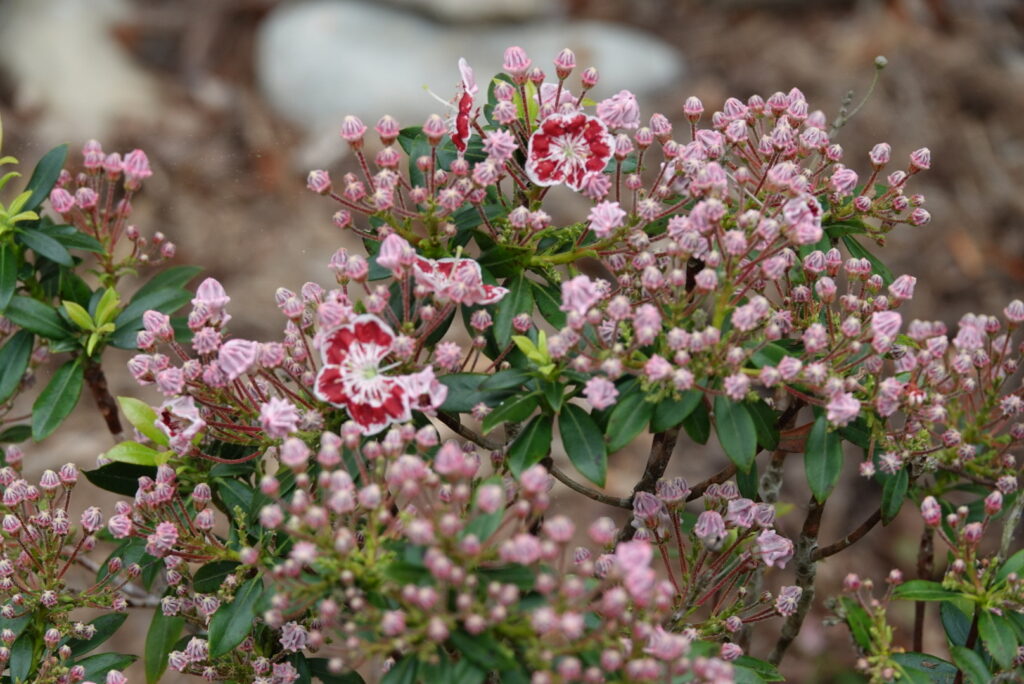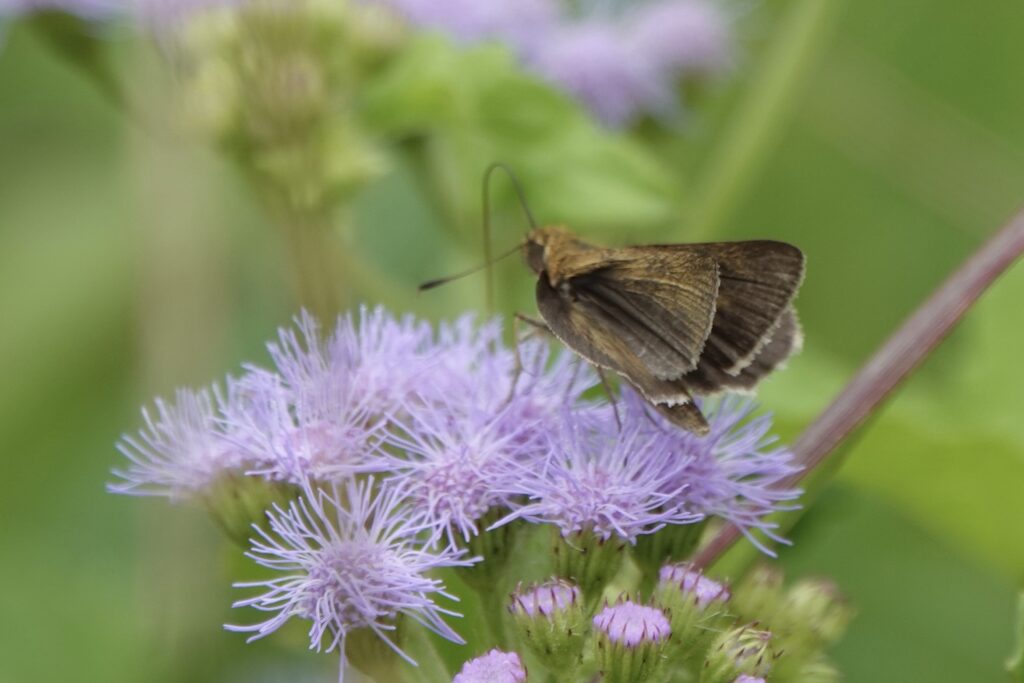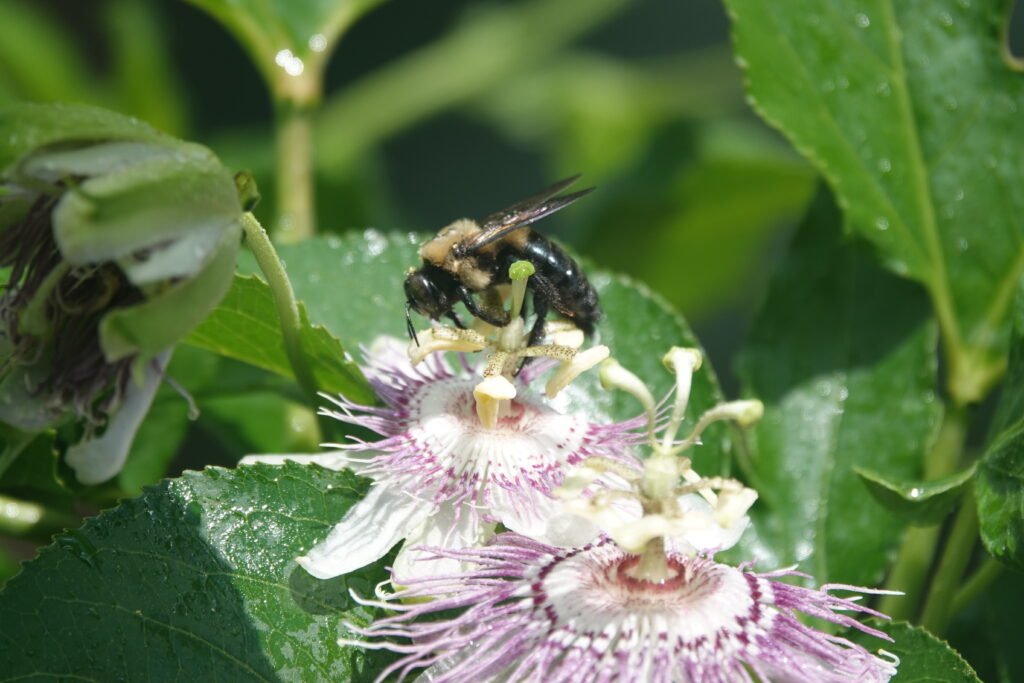Replacing Your Non-native and Invasive Plants with Natives
Using Natives – For most of us, once we have learned the value of native plants versus non-native or even invasive plants, we cannot afford to rip out everything we have and start over. If you can, just skip to the links at the bottom of the page to learn what you need and where to buy plants! The rest of us need to develop more of a long-term plan, replacing or adding a few plants at a time. You may also live within an HOA where there are restrictions on what plants you can plant out front.
Know Your Yard – Before you bring your first plant home, spend some time getting to know your yard. Many Master Gardeners could landscape a yard with the plants that they purchased and planted, and then the plant did not make it for one reason or another. Note where you get morning sun. Is your yard mostly sunny or mostly shady or a combination of both? Note whether you have areas that are particularly wet or dry. Then when you start researching plants, make a list of plants that will work for your yard. When buying, get into the habit of reading the plant tags.
Spend some time identifying invasive plants that may be growing on your property. Make removing them a priority. Invasive, non-native plants are often attractive plants that were imported, but when they escape the home garden, they outcompete native plants and provide little benefit to native fauna. The list at the end of this article ranks which invasives are the biggest problems for Virginia.
Your HOA and Native Plants & Trees – Because we have so many HOAs in James City County and Williamsburg, let’s talk about them. One of the easiest ways to support our native fauna while learning about natives is to follow your restrictions in the front of your house while adding natives in the back and along the sides of your property. While you get familiar with the numerous native plants available, you can figure out what might work out front. Another thing you can do is work with your HOA to get some of the rules updated. In addition to the benefits to native insects, native plants can play an important role in preventing erosion, reducing the need for chemical fertilizers, and reducing water use once established.
For many homes, backyards may not have the landscaping design that you have in the front, so you have more space to work with. Often, when a lot has been cleared for a house, there is a lawn and then mature trees with few shrubs or understory trees. If you have some space for these, state tree nurseries sell seedlings including redbud, elderberry, shrubby dogwoods, and many others. They take a few years to mature, but they are an inexpensive solution for adding natives. If you do not have mature trees, you will want to add them early in the process because they take the longest time to grow.
Start Small, See What Thrives. If you have a lot of space to fill, start by creating one garden area at a time. You might want to create a butterfly garden in a sunny spot in your yard. Check out the design plans in the links below to get started. Those first plants you plant will spread and provide plants to add more gardens in a couple of years. Getting friends, family, and neighbors to grow natives will give you people to swap plants with as your gardens mature.
Fall is a Great Time to Begin. The best part about adding native plants to your yard is that it does not all need to be completed at once. Pick an area or two, select some plants, and see what thrives in your yard. Be careful though because the more you learn, the more plants you will want. Fall is a great time to get started!
FOR ADDITIONAL INFORMATION CHECK OUT THESE HELPFUL RESOURCES!
Quick ways to add native plants: Grow native vines (Passion Vine, Virginia Creeper, Native Honeysuckle, Native Wisteria) on a trellis or fence Add fast-growing shrubs such as Beauty Berry or Silky Dogwood
List of native plants to substitute: https://www.plantvirginianatives.org/nova-non-native-invasive-plants-of-concern-in-northern-virginia-and-regional-native-alternatives
Regional guides to help learn about native plants: https://askhrgreen.org/wp-content/uploads/2011/06/Native-Plants-for-Southeast-Virginia-Guide.pdf and https://dnr.maryland.gov/criticalarea/Documents/chesapeakenatives.pdf
Virginia Department of Forestry: Buyvatrees.com
Native Plant Nursery list: https://vnps.org/native-plant-nursery-list/
Garden design plans: These designs are from a Missouri group, but our native plants are many of the same ones as Missouri. Double-check the suggestions and substitute as needed. https://grownative.org/learn/native-landscape-plans/
Invasive Plants of Virginia: https://www.dcr.virginia.gov/natural-heritage/document/nh-invasive-plant-list-2014.pdf
Photos of Native Flowers by Jim Easton, Nature Photographer



